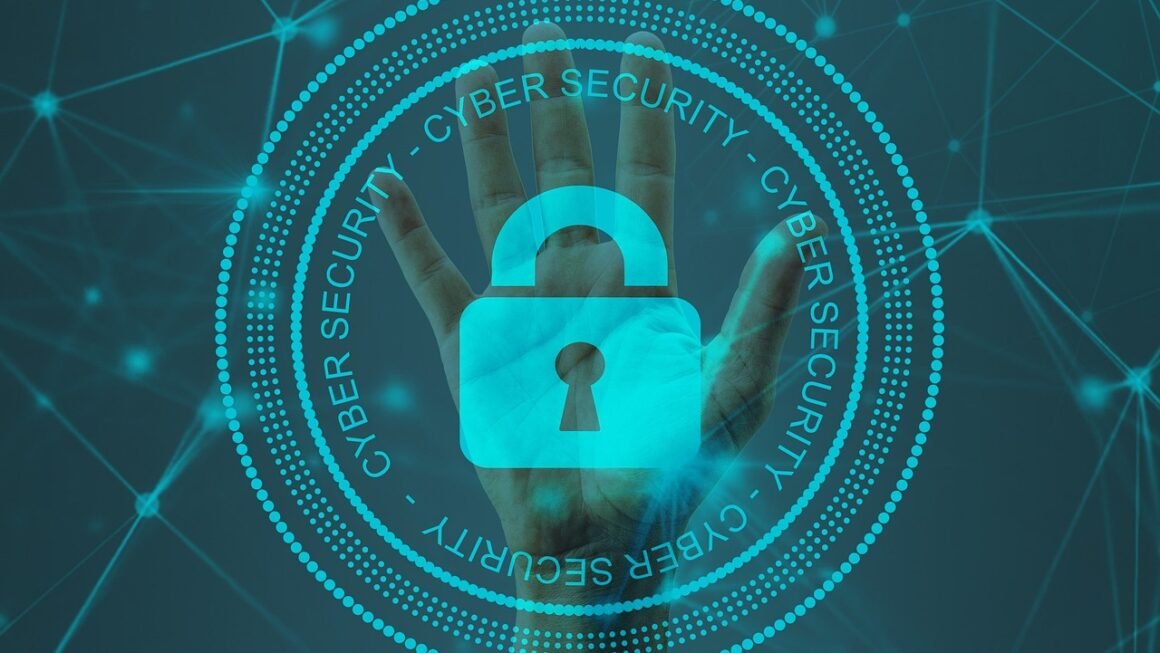Crafting a robust cybersecurity strategy is no longer optional; it’s a vital necessity for organizations of all sizes. The ever-evolving threat landscape demands a proactive and well-defined approach to protecting sensitive data, systems, and reputation. This blog post delves into the intricacies of cybersecurity policy, providing a comprehensive guide to understanding, developing, and implementing effective strategies.
Understanding Cybersecurity Policy
A cybersecurity policy is a documented set of rules, procedures, and guidelines designed to protect an organization’s digital assets. It provides a framework for managing cybersecurity risks and ensuring compliance with relevant regulations. Without a clear policy, organizations are vulnerable to security breaches, data loss, and reputational damage.
Key Components of a Cybersecurity Policy
A comprehensive cybersecurity policy should cover a range of critical areas. Here are some essential components:
- Acceptable Use Policy: Defines how employees can and cannot use company-owned devices, networks, and data. For example, it might restrict access to certain websites or prohibit the use of personal devices for work-related tasks.
- Password Management Policy: Establishes standards for creating, storing, and changing passwords. This includes requirements for password complexity, length, and frequency of updates. A strong password policy is the first line of defense against unauthorized access.
- Data Security Policy: Outlines procedures for classifying, storing, and protecting sensitive data. This should address data encryption, access controls, and data retention policies.
- Incident Response Plan: Details the steps to be taken in the event of a security breach or cyberattack. This includes procedures for identifying, containing, eradicating, and recovering from incidents. A well-defined incident response plan minimizes the damage caused by security breaches.
- Network Security Policy: Addresses the security of the organization’s network infrastructure, including firewalls, intrusion detection systems, and wireless access points. This policy ensures that the network is protected from unauthorized access and malicious traffic.
- Remote Access Policy: Defines the rules and procedures for employees who access the organization’s network remotely. This includes requirements for using VPNs, multi-factor authentication, and secure devices.
Benefits of Implementing a Strong Cybersecurity Policy
A well-crafted cybersecurity policy offers numerous benefits:
- Reduced Risk of Security Breaches: By establishing clear guidelines and procedures, a policy helps minimize the likelihood of successful cyberattacks.
- Improved Data Protection: A policy ensures that sensitive data is protected from unauthorized access, loss, or theft.
- Enhanced Compliance: Many industries are subject to regulations regarding data security and privacy. A cybersecurity policy helps organizations comply with these regulations. For example, HIPAA (Health Insurance Portability and Accountability Act) requires healthcare organizations to protect patient data, while GDPR (General Data Protection Regulation) sets standards for data privacy in the European Union.
- Increased Employee Awareness: A policy educates employees about cybersecurity risks and their responsibilities in protecting the organization’s assets. Regular training and awareness programs reinforce the policy’s message.
- Improved Incident Response: A well-defined incident response plan enables organizations to respond quickly and effectively to security breaches, minimizing the damage caused by attacks.
- Enhanced Reputation: A strong cybersecurity posture demonstrates a commitment to protecting data and privacy, enhancing the organization’s reputation and building trust with customers and partners.
Developing a Cybersecurity Policy
Developing an effective cybersecurity policy requires a systematic approach, involving key stakeholders and considering the organization’s specific needs and risks.
Conducting a Risk Assessment
The first step in developing a cybersecurity policy is to conduct a thorough risk assessment. This involves identifying the organization’s assets, assessing the threats to those assets, and evaluating the vulnerabilities that could be exploited.
- Identify Assets: Determine what data, systems, and resources need protection.
- Assess Threats: Identify potential threats, such as malware, phishing attacks, and insider threats.
- Evaluate Vulnerabilities: Determine weaknesses in systems and processes that could be exploited.
- Analyze Impact: Assess the potential impact of a successful attack, including financial losses, reputational damage, and legal liabilities.
- Prioritize Risks: Rank risks based on their likelihood and impact.
Defining Policy Objectives
Once the risk assessment is complete, the next step is to define the policy objectives. These objectives should align with the organization’s overall business goals and risk tolerance.
- Specific: Clearly define what the policy aims to achieve.
- Measurable: Establish metrics for tracking progress toward policy objectives.
- Achievable: Set realistic goals that can be accomplished within a reasonable timeframe.
- Relevant: Ensure that the policy objectives are aligned with the organization’s business goals.
- Time-Bound: Establish deadlines for achieving policy objectives.
Creating the Policy Document
The cybersecurity policy document should be clear, concise, and easy to understand. It should cover all the key components mentioned earlier, including acceptable use, password management, data security, incident response, network security, and remote access.
- Use Clear and Simple Language: Avoid technical jargon and explain complex concepts in plain language.
- Provide Examples: Illustrate policy requirements with practical examples.
- Include Procedures: Detail the steps to be taken to comply with the policy.
- Assign Responsibilities: Clearly define who is responsible for implementing and enforcing the policy.
- Establish Consequences: Outline the consequences for violating the policy.
Review and Approval
Before implementation, the cybersecurity policy should be reviewed and approved by key stakeholders, including senior management, legal counsel, and IT security professionals.
- Seek Feedback: Solicit feedback from stakeholders to ensure that the policy is comprehensive and practical.
- Obtain Approval: Obtain formal approval from senior management to demonstrate commitment to the policy.
- Document Review Process: Maintain a record of the review and approval process.
Implementing the Cybersecurity Policy
Implementing a cybersecurity policy is not a one-time event; it’s an ongoing process that requires continuous monitoring, maintenance, and improvement.
Communication and Training
Employees need to be aware of the cybersecurity policy and their responsibilities for complying with it. Regular training sessions and awareness campaigns can help reinforce the policy’s message and improve employee understanding.
- Conduct Regular Training: Provide training on topics such as password security, phishing awareness, and data protection.
- Use Multiple Channels: Communicate the policy through various channels, such as email, newsletters, and intranet postings.
- Make it Engaging: Use interactive training methods and real-world examples to keep employees engaged.
- Track Progress: Monitor employee understanding and compliance with the policy.
Enforcement and Monitoring
The cybersecurity policy should be enforced consistently and fairly. Monitoring systems can help identify and address violations of the policy.
- Establish Enforcement Procedures: Define the steps to be taken to address violations of the policy.
- Use Monitoring Tools: Implement tools to monitor network traffic, system logs, and user activity for signs of policy violations.
- Conduct Regular Audits: Perform regular audits to ensure that the policy is being followed.
- Take Corrective Action: Address violations of the policy promptly and consistently.
Incident Response Planning and Execution
A well-defined incident response plan is crucial for minimizing the damage caused by security breaches. The plan should include procedures for identifying, containing, eradicating, and recovering from incidents.
- Develop an Incident Response Team: Assemble a team of individuals with the skills and expertise needed to respond to security incidents.
- Establish Communication Channels: Define how the incident response team will communicate with each other and with other stakeholders.
- Practice the Plan: Conduct regular simulations and tabletop exercises to test the incident response plan.
- Document Lessons Learned: After each incident, document the lessons learned and update the incident response plan accordingly.
Maintaining and Updating the Cybersecurity Policy
The cybersecurity landscape is constantly evolving, so it’s essential to review and update the cybersecurity policy regularly to ensure that it remains effective.
Regular Reviews
The cybersecurity policy should be reviewed at least annually, or more frequently if there are significant changes to the organization’s business environment or threat landscape.
- Assess Policy Effectiveness: Evaluate whether the policy is achieving its objectives.
- Identify Gaps: Identify any gaps or weaknesses in the policy.
- Consider New Threats: Assess emerging threats and vulnerabilities.
- Review Compliance Requirements: Ensure that the policy complies with all applicable regulations.
Updates and Revisions
Based on the review, the cybersecurity policy should be updated and revised as needed.
- Document Changes: Keep a record of all changes made to the policy.
- Communicate Updates: Communicate updates to the policy to all employees.
- Retrain Employees: Provide additional training to employees on any significant changes to the policy.
Continuous Improvement
Cybersecurity is an ongoing process, not a destination. Organizations should continuously strive to improve their cybersecurity posture by implementing new technologies, refining their processes, and enhancing employee awareness.
- Stay Informed: Keep up-to-date on the latest cybersecurity threats and trends.
- Invest in Training: Provide ongoing training to employees on cybersecurity best practices.
- Implement Security Tools: Deploy security tools and technologies to protect against cyberattacks.
- Monitor Performance: Track key metrics to assess the effectiveness of the cybersecurity program.
Conclusion
Developing and implementing a robust cybersecurity policy is a critical investment in protecting an organization’s assets, reputation, and future. By understanding the key components of a cybersecurity policy, following a systematic development process, and continuously maintaining and updating the policy, organizations can significantly reduce their risk of security breaches and ensure compliance with relevant regulations. Remember that cybersecurity is an ongoing journey, requiring constant vigilance, adaptation, and improvement.



